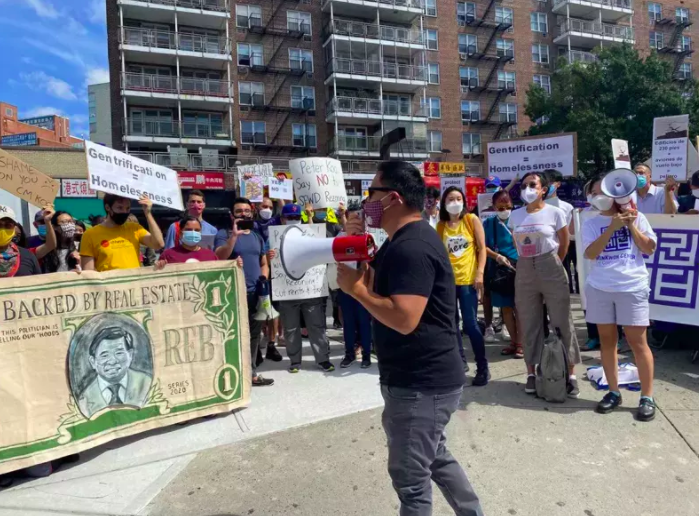A public hearing on the controversial Queens development proposal took place this week. Fans see a potential to connect isolated areas. Foes fear gentrification.

This article originally appeared in World Journal.
Translated by Rong Xiaoqing from Chinese.
The City Planning Commission held a public hearing on Wednesday for the controversial Special Flushing Waterfront District project. Opponents held a rally in Flushing on August 12th to protest against the development. Organizers, including local organizations MinKwon Center and the Chhaya CDC and state assemblyman Ron Kim, said Flushing needs more affordable housing, and the project would accelerate gentrification there.
As part of the Flushing Waterfront Revitalization Plan, the Special Flushing Waterfront District would cover a 40-acre area from College Point Blvd. on the East to Flushing Creek on the West, and from 36th Ave. on the North and 40th Road on the South. It would build a complex of 1,725 residential units, including 75 to 90 affordable units and 879 hotel rooms, in addition to office and retail spaces. It would offer 21,913 square feet for public use, include 1,533 parking lots, maintain 3.14 acres of public open space and beautify the walkway along the river.
Minkwon Center and Chhaya CDC, long time opponents of the project, organized the protest in front of the Flushing library. At the end of the rally, protesters marched along Main Street, chanting slogans against the project. Assemblyman Kim, who participated in the protest, said the project would push up rents in the area and make life even harder for residents who are already struggling to pay rents.
John Park, executive director of MinKwon, said the organization surveyed 300 local residents and businesses as early as in 2015, and the majority were against the project. He said housing is critically inadequate in Flushing, and the affordable units offered by the project fall far short of the need.
Park said the COVID 19 pandemic has savaged Flushing’s economy; many people are on the edge of rent delinquency. And the project would build apartment units selling for a million dollars, and therefore, pump up rents in the area to hurt residents. He said the organization had filed a lawsuit to the state supreme court, trying to stop the project on the basis that the city violated laws and rules.
Protesters accused Councilmember Peter Koo from Flushing of standing with the developers. In a statement, Koo said he has not made a decision on this issue. But he agrees that the project would connect downtown Flushing and the currently desolate waterfront area.
Koo said he understands that many issues related to the project needs to be solved, and promised he will pay close attention to the ULURP process. “Eventually, the project is to make Flushing a better place, and try to utilize the waterfront area that is currently not in use.”









